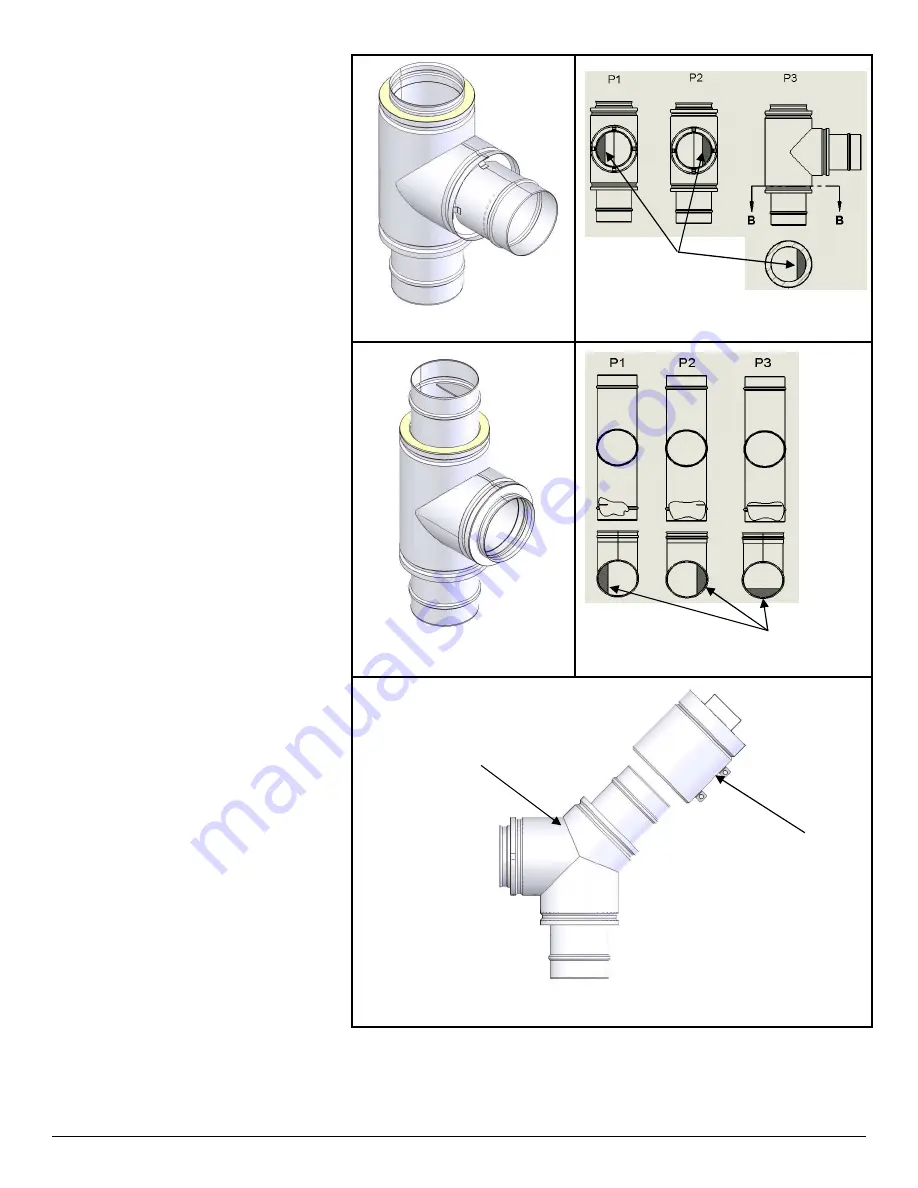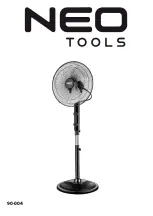
Model VIP+
28
Owner's Manual
Wyes and Tees (Cleanout)
Special care must be taken when designing a
Grease Duct to provide access for cleanout and
comply with NFPA 96 requirements.
Inspection and cleanout points can be equipped with
a dam at the access port. The access port must be
closed with a tee cap and the grease dam prevents
grease spillage when opened. The location of the
access port in the tee is dependent on the orientation
of the tee in the final installation. Two types of tees
are available to cover all possible configurations and
insure that a grease dam can always be properly
positioned.
1)
T1 Grease Tee
(
Figure 44
) is your basic 90° Tee
fitted with a grease Dam. Refer to
Figure 45
for
dam position.
2)
T2 Grease Tee
(
Figure 46
) has inverted female
and male ends and covers mostly horizontal grease
dam configurations. Refer to
Figure 47
for dam
position.
When ordering you GreaseTee, please specify tee
type (T1 or T2) and dam position (P1, P2 or P3)
The Grease Duct Wye (
Figure 48
) is useful where
the grease duct must be accessed for clean-out and
inspection purposes. It can be used in place of the
T1 and T2 Grease Tee and combined with a Tee
Cap to provide easy access clearance at the end of
an horizontal run. See
Figure 49
for typical
installation.
The wyes and tees are attached and sealed to other
pipe sections in the same manner as described in
Chimney Joint Connection
Section.
A No-Tool Tee Cap is available to facilitate access
for inspection and cleanout.
Figure 44
Figure 45
Figure 46
Figure 47
Figure 48
Grease Duct
Wye
Tee Cap
T1 Optional
Dam Position
T2 Optional
Dam Position
T1
T2



































